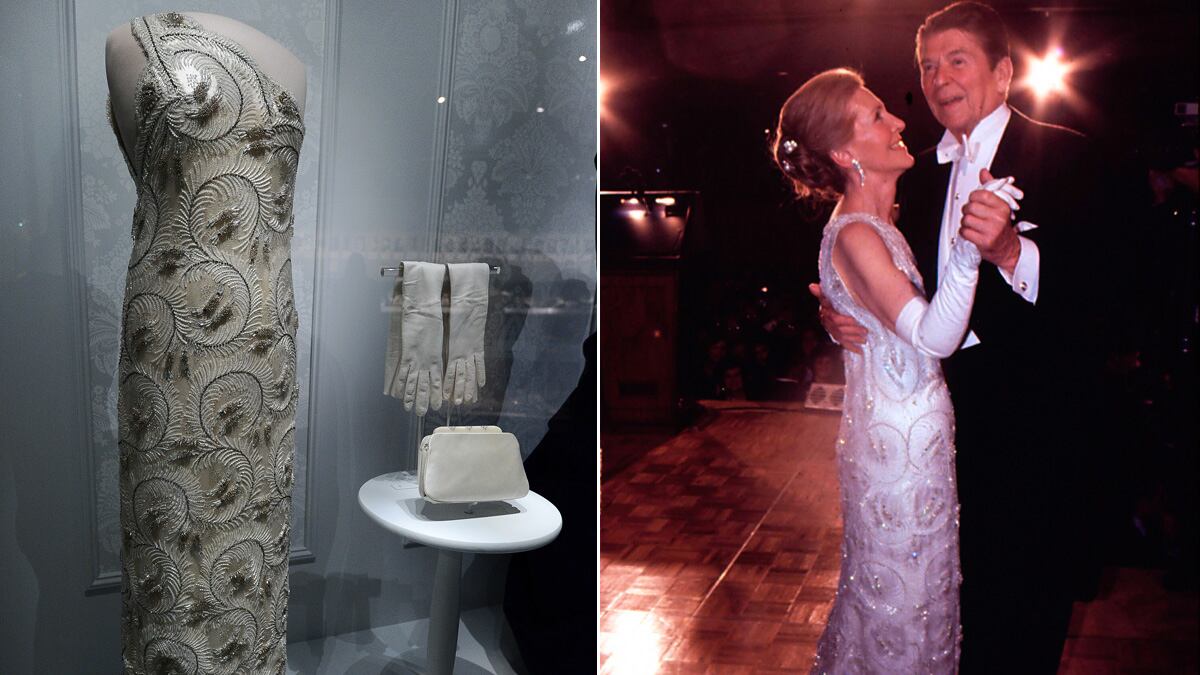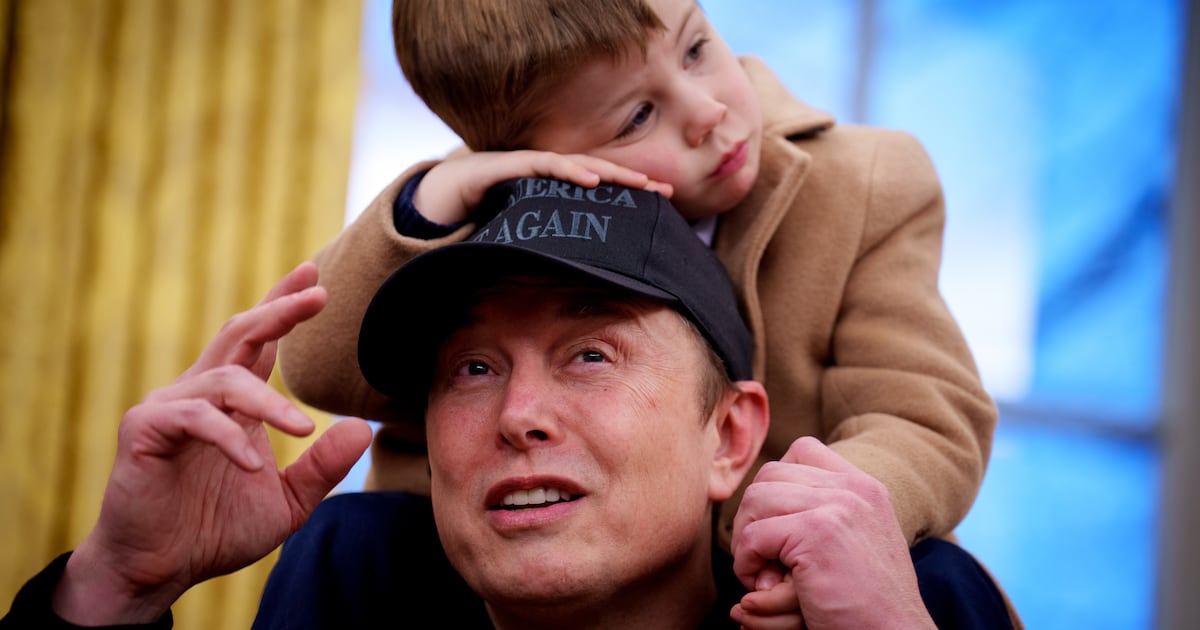
A new exhibition drawing from the First Ladies Collection at the National Museum of American History in Washington, D.C., includes one painted paper fan, a wowzer of a silver tea service, one well-worn silk shoe, a lump of charred wood, a wealth of china, and one sweetly autographed copy of Treasure Island—in addition to the beloved inaugural ballgowns, cocktail dresses, and day suits that typically leave visitors swooning.
The collection, one of the most popular exhibitions at the Smithsonian, has been re-examined and re-configured in a new East Wing gallery space in anticipation of a major renovation that will close the museum’s West Wing. This more intimate look at the first ladies—or at least their accoutrement—opens to the public Nov. 19.
Michelle Obama’s white inaugural gown—designed by Jason Wu—still holds center court in the new exhibition. And like the other gowns worn by Hillary Clinton, Laura Bush, Lady Bird Johnson, and all the rest, it remains a glittering national symbol of culture, femininity, and complicated political gamesmanship.
The gowns, sealed behind glass on headless forms, also tend to have the look of artifacts—wholly disengaged from the women who wore them. But the exhibition’s designer, Claire Brown, and its curator, Lisa Kathleen Graddy, have made a valiant effort to give visitors a more personal understanding of the women who have served in this elevated and poorly conceived role.
“What I thought was interesting was asking, how did each first lady approach the job? You have to figure out: Who are you now?” Graddy said during a tour of the show.
“You got a sense of how seriously they all took the job. It meant something to them. Serving their country meant something to them,” she said. Unfortunately, “you can never get it right. It’s a moving target… They were all praised and they were all criticized.”
In this more expressive exhibition, visitors can now view video from the inaugural balls showing the new first couple dancing. Another screen offers a closeup examination of the gown, a kind of high-tech fashion inspection reminiscent of E! Entertainment’s glam cam during Hollywood’s red-carpet season.
The delicate beadwork on the hem of Mrs. Obama’s gown is revealed as exquisite. The rich gold embroidery on Rosalynn Carter’s dress has a surprising elegance given the criticism she received in her day for choosing to re-wear an old dress for the grand occasion of a presidential inaugural. And Laura Bush’s red Chantilly lace gown turns out to be more dramatic from afar, where its mermaid-like silhouette is more interesting than its detail work.
The gowns speak in bold gestures about politics, policy, and the times: Eleanor Roosevelt promoted ready-to-wear over haute couture, Lou Hoover was a champion of made-in-America craftsmanship, Mrs. Obama celebrated the work of young or independent designers.
The effect of all of this dress information is a kind of glossy, virtual intimacy that is revealing yet not personal.
The pieces that give a greater sense of the human being—rather than the symbolic role she is expected to play—are items such as Dolley Madison’s delicate painted fan, her tattered ballet slipper, her worn tobacco-hued leather calling-card case. There’s something more personal, more exceptional about these keepsakes because they were used over and over again by her. They were not crafted for a single moment of public consumption, for a historic snapshot, or a museum vitrine.
“First Ladies,” as the exhibition is called, also includes a tiny edition of Treasure Island that Edith Roosevelt autographed for her son Quinton’s friend Charley Taft. She signed it: “Charley from Quentin’s mother.” Young master Taft took the book with him to the swearing-in of his father, William Howard Taft, apparently to stave off boredom. The inscription is cheeky and modest, confident, wry and telling.
The generous display of china is meant to underscore the most visible job of the first lady: to serve as hostess. (China also “has an enormous fan base,” said Graddy.) Indeed, in the vernacular of the Smithsonian, the first lady is not specifically a spouse but rather whoever is designated as the administration’s official hostess. As a result, the exhibition includes portraits of Martha Jefferson Randolph, Thomas Jefferson’s daughter; Sarah Yorke Jackson, daughter-in-law of Andrew Jackson; Mary Arthur McElroy, sister of Chester Arthur, and other daughters-in-law and children.
So far, the members of this club have all been women. But in the Smithsonian’s peculiar definition, the First Ladies Collection seems poised to wrestle with the inevitability of a woman in the highest office.
In this first update of the exhibition since the historical presidential candidacy of Hillary Clinton, one wishes the museum had, in some way, acknowledged the dynamic shift that already has taken place. After all, the role of first lady can now be defined as everything from hostess to feminist to training ground for the presidency.
If Clinton had succeeded in her campaign, Graddy wonders: Would her husband have served in the role of first gentleman, would she have designated Chelsea or her mother as official hostess, or would those duties have been outsourced to a professional?
Those considerations, however, would be getting ahead of history.
But give it time. The collection is expected to be in this new space for five to seven years. By then, the role of first lady, itself, could be history.






